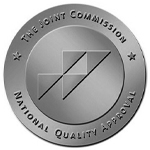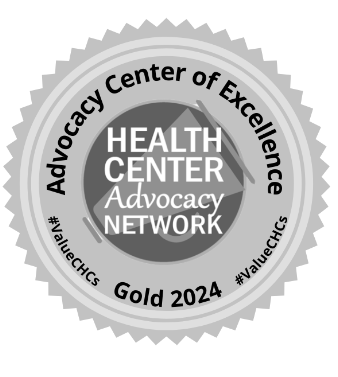
Measles is on the rise in the US this year. The number of reported cases is already more than double the number of cases in all of 2023, and considering it is highly contagious, it’s especially important to reduce spread. Keystone Infectious Disease’s Medical Director, Dr. Raghavendra Tirupathi, and medical students studying under him, Sachin Kasarla, Madhumithaa Jagannathan and Mohd Zeeshan, discus how to keep yourself safe from the virus in today’s Take Care article.
What is measles?
Measles, also called red measles, 10-day measles or rubeola, is caused by a highly-contagious virus (this is different than German Measles, also known as rubella).
Measles is currently rare in the US because highly-effective vaccines are given as part of routine childhood immunizations. Over the past two decades, sporadic outbreaks of measles have occurred in the US, ranging from 37 cases in 2004 to 1,282 in 2019. Measles outbreaks in the US often originate from an individual who becomes infected while in another country and then spreads the virus to unvaccinated individuals in the US.
What are the symptoms?
Common signs of measles infection include a high fever and a rash that starts on the head and spreads down to the rest of the body. This rash usually appears 3 to 5 days after the first symptoms.
In addition to a fever and rash, other measles symptoms may include: cough, runny nose, red watery eyes, small spots in the cheek area inside the mouth called “Koplik spots” and diarrhea. Measles can also cause pneumonia and infections in the ears, eyes and upper airway.
Approximately 1 to 3 per 1,000 people infected with measles die from respiratory or neurologic complications. Rare but serious neurologic complications include swelling of the brain and spinal cord or progressive neurologic disorders that develop weeks to years after measles infection.
People at highest risk of developing complications from measles include unvaccinated individuals younger than 5 years or older than 20 years, and those who are immunocompromised or pregnant. Measles acquired during pregnancy can result in preterm labor and low infant birth weight.
How does measles spread?
It’s an airborne disease, which means it spreads through the air when an infected person breathes, coughs, sneezes or talks. If you breathe in the particles from someone who has measles, you can get measles, too. The airborne droplets can remain in a room for two hours, even after the person with measles is gone. Droplets can land on surfaces and spread that way as well.
People with measles can spread the virus starting about four days before the onset of rash through four days after the rash appears.
Common ways measles is spread include: sharing drinks or food with someone with measles, kissing, hugging, shaking hands or holding hands with someone who has measles and touching a surface containing the virus and then touching your mouth, nose or eyes. Measles can spread to babies during the pregnancy, delivery or while nursing.
Who is at risk?
Any non-immune person (someone who is not vaccinated or was vaccinated but did not develop immunity) can become infected. Unvaccinated young children and pregnant persons are at the highest risk of severe measles complications. Children with malnutrition or other causes of a weak immune system are at the highest risk of death from measles.
How long does it take to get measles after being exposed to it?
After being exposed to measles, the incubation period typically ranges from 7 to 21 days before symptoms appear. However, most people start showing symptoms around 10 to 14 days after exposure. It’s important to note that some individuals might not develop symptoms at all, but they can still spread the virus to others.
How do you test for measles?
Measles is most commonly diagnosed by a mouth or nasal swab or through a urine sample.
How can you prevent measles?
The measles, mumps and rubella (MMR) vaccine prevents infection. Children should get the MMR vaccine when they are 12 to 15 months old. Then they need a second shot when they are 4 to 6 years old, before starting school. Babies and children need to get the vaccine earlier than usual if they travel outside of the US or live in an area or need to travel to an area where there is a measles outbreak.
Some older children and adults also need the MMR vaccine, including health care workers, students who don’t have written proof of two shots and some people who travel outside of the US.
Some individuals should wait or get tested before getting the MMR vaccine. This includes people with HIV or cancer and people taking certain medicines. When healthy people get the vaccine, it helps protect the people who cannot get it.
How is measles treated?
There is no specific treatment for measles. Caregiving should focus on relieving symptoms, making the person comfortable and preventing complications. Drinking enough water and treatments for dehydration can replace fluids lost to diarrhea or vomiting. Eating a healthy diet is also important. Doctors may use antibiotics if the patient develops pneumonia and ear or eye infections.
Children or adults with measles should receive two doses of vitamin A supplements, given 24 hours apart. This restores low vitamin A levels that occur even in well-nourished children. It can help prevent eye damage and blindness. Vitamin A supplements may also reduce the number of measles deaths.
People without previous measles vaccination or infection who are exposed to someone with measles should receive the MMR vaccine within 72 hours or immunoglobulin (derived from donated blood that contains antibodies to measles) within 6 days of exposure.
This article contains general information only and should not be used as a substitute for professional diagnosis, treatment or care by a qualified health care provider.




